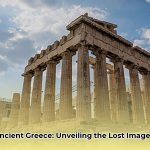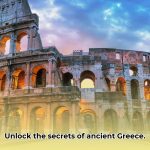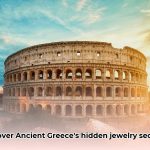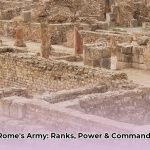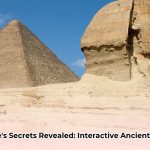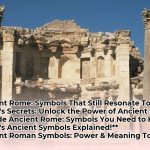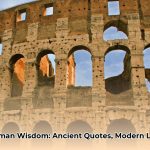Imagine stepping back over 4,000 years, traversing the very grounds where legends of kings, mythical beasts, and a sprawling, labyrinthine palace once reigned. Knossos, the heart of the enigmatic Minoan civilization, isn’t just an archaeological site; it’s a living echo of Europe’s earliest high culture. Explore an ancient Greece map to visualize the wider region. While its grandeur is undeniable, navigating this vast and intricately restored complex can be a challenge. That’s precisely why a detailed Knossos map isn’t merely a suggestion—it’s your essential compass to unlock every secret, from the famed Throne Room to the colossal storage magazines, ensuring you experience the full majesty of this ancient wonder.
The Indispensable Role of a Knossos Map
Planning your visit to Knossos without a reliable map is akin to embarking on a sea voyage across the Aegean without a chart. This ancient capital, home to King Minos and the legendary Minotaur, sprawls across approximately 14,000 square meters (about 150,000 square feet), featuring over 1,000 rooms spread across multiple levels. Its deliberately asymmetrical layout, designed around the natural terrain and functional needs of its time, contributes to its famous labyrinthine feel, making navigation without guidance confusing and frustrating.
A comprehensive Knossos map transforms your visit from a potentially aimless wander into a focused, enriching exploration. It empowers you to:
- Master the Layout: Gain an immediate understanding of how different sections of the palace interconnected and functioned within the sophisticated Bronze Age society that thrived here from roughly 3000 BCE to 1100 BCE.
- Efficient Exploration: Chart a course that prioritizes your interests. Whether your passion lies in the administrative quarters, ceremonial spaces, or the intimate royal residences, a map allows you to move efficiently, maximizing your valuable time at one of Europe’s most significant historical sites.
- Uncover Hidden Wonders: Beyond the major attractions, a good map often highlights lesser-known but equally fascinating areas, guiding you to architectural nuances, restored frescoes, and unique archaeological features you might otherwise overlook.
- Connect Myth to Reality: The myths of Knossos, particularly the tale of the Minotaur and the Labyrinth built by Daedalus to house him, are deeply intertwined with the palace’s complex structure. A map allows you to visualize where these legends might have found their inspiration, bringing the ancient stories vibrantly to life.
Unraveling the Layers: History, Myth, and Restoration
To truly appreciate Knossos, one must understand its multifaceted identity, woven from millennia of human presence, profound mythology, and bold 20th-century interpretation.
A Chronology of Power and Innovation
The site of Knossos boasts human habitation dating back to the Neolithic Age, around 6000 BCE, with early agricultural societies establishing roots. The first grand palace emerged at the dawn of the Middle Minoan period, around 2000 BCE, marking Knossos as the principal center of the Minoan civilization. This era saw remarkable advancements, including:
- Architectural Sophistication: Initial isolated structures around a rectangular court evolved into an elaborate complex with extensive colonnades and intricate multi-level designs. An advanced system of drains, conduits, and pipes provided water and sanitation, showcasing remarkable engineering for its time.
- Artistic Flourishing: Minoan fresco painting reached its zenith, adorning palace walls with vibrant, naturalistic scenes of dancing, sports, and marine life, including the famous dolphins. The creation of fine polychrome pottery on a black-glazed ground, such as the distinctive Kamáres ware, also defined this period.
- Writing Systems: The evolution from a hieroglyphic script to the more linear Linear A, used for administrative records, highlights the Minoans’ sophisticated bureaucracy. Later, around the 15th century BCE, after Mycenaean influence from mainland Greece grew, Linear A was replaced by Linear B, an early form of Greek found extensively in administrative tablets at Knossos.
- Trade and Influence: As a dominant Bronze Age power, Knossos engaged in extensive trade throughout the Levant and the wider Aegean, spreading its cultural influence, which in turn contributed to the emergence of the Mycenaean culture.
Around 1720 BCE, a destructive earthquake significantly damaged the first palace. However, the Minoans rebuilt it on an even grander scale. The “Last Palace” of Knossos, the remains of which largely constitute what visitors see today, thrived until its eventual destruction by fire around 1400 BCE, shifting the political center of the Aegean world to Mycenae.
The Mythical Heart: Minos, Minotaur, and Labyrinth
Knossos is inextricably linked to the captivating Greek myths that explain its legendary labyrinthine layout. King Minos, son of Zeus and Europa, ruled from Knossos, wielding power over the entire Aegean. The most famous tale involves his wife Pasiphae and the monstrous Minotaur, a half-man, half-bull creature hidden within a sprawling labyrinth designed by the master craftsman Daedalus.
This myth tells of Minos’s demand for a grim tribute from Athens: every nine years, six young men and six young women were sent to Crete to be sacrificed to the Minotaur within his confusing lair. This practice stemmed from Minos’s revenge for the murder of his son, Androgeus, by the King of Athens. The cycle of sacrifice continued until the heroic Athenian prince Theseus volunteered to join the tributes. With the aid of Minos’s daughter, Ariadne, who provided him with a magical ball of thread (or “Ariadne’s thread”) to navigate the labyrinth, Theseus slew the beast and found his way out, ultimately escaping with Ariadne to Naxos. Daedalus, imprisoned by Minos for his assistance to Ariadne, famously escaped with his son Icarus by fashioning wings of wax and feathers, leading to Icarus’s tragic flight too close to the sun. These captivating narratives imbue the site with a profound sense of ancient drama and mystery.
The “Knossos Palace Reconstruction Controversy”
The vivid structures you encounter at Knossos owe much to Sir Arthur Evans, the British archaeologist who purchased the site and began extensive excavations in 1900. Evans undertook ambitious restorations, employing concrete and vibrant red columns to “bring the palace back to life” and showcase how it might have looked in Minoan times. His team included skilled local overseers and craftsmen like Manolis Akoumianakis, Manolis Markogiannakis, Spyros A. Vassilakis, Antonis Zidianakis, and restorer Petros Petrakis.
However, Evans’s methods have sparked considerable debate, known as the Knossos Palace reconstruction controversy. Modern archaeological practices often prioritize preservation over reconstruction, and critics argue that Evans’s artistic interpretations, while making the site highly accessible and visually striking, may not entirely reflect historical accuracy. This debate adds another fascinating layer to your visit, prompting you to consider the intersection of historical fact, archaeological interpretation, and artistic vision.
Choosing Your Essential Knossos Map
With an understanding of Knossos’s profound significance, let’s explore your options for obtaining the perfect navigation tool.
| Map Type | Benefits | Drawbacks |
|---|---|---|
| Online Digital Maps | Highly convenient and often free, these maps are ideal for pre-trip planning on your computer or mobile device. Many offer zoom functions, interactive elements, and details on key points of interest. They are easily accessible on your smartphone or tablet while on-site, assuming connectivity. | Reliant on a stable data connection, which can be spotty at archeological sites. Constant screen use drains battery life. Smaller screens may not provide the comprehensive overview of a large paper map. |
| Printed Paper Maps | Reliable and battery-free, paper maps offer a tangible sense of your location and allow for easy annotation or marking of your route. They also double as a wonderful, lasting souvenir of your visit. Often available at the entrance or from tour operators. | Can be bulky to carry, especially in warmer weather. May not reflect the absolute latest site changes (though major ancient sites like Knossos change slowly). Can easily be misplaced or damaged by elements. |
| Maps Included with Guided Tours | Often the most detailed and accurate, as they are typically curated by experts who know the site intimately. They are perfectly aligned with a logical touring route and frequently accompanied by in-depth verbal explanations from your guide, enhancing understanding significantly. | Generally more expensive, as they are part of a larger tour package. May limit your flexibility to explore off-path independently, as the tour follows a set itinerary. |
Before your visit, a quick online search for “Knossos map download” can reveal reputable sources, including official archaeological site information or well-regarded travel blogs that often provide excellent downloadable versions.
Navigating the Labyrinth: Key Areas of Knossos Palace
Your Knossos map will be instrumental in pinpointing these critical areas, each contributing to the rich tapestry of Minoan life.
| Area | Description |
|---|---|
| West Court & Kouloures | Your journey often begins at the West Court, a large, open area once utilized for grand ceremonies and processions. Notice the unique circular pits known as Kouloures, believed to have served as grain storage or significant ritual structures, hinting at the agricultural and ceremonial importance of the palace. |
| Central Court | This expansive rectangular space forms the true heart of the palace, around which many key buildings branch out. It was likely a bustling hub for public gatherings, religious ceremonies, and possibly even the famous bull-leaping spectacles that feature so prominently in Minoan art. From here, you can gain a clear sense of the palace’s vast scale and interconnectedness. |
| Throne Room | A truly iconic space, featuring Europe’s oldest known throne carved from gypsum. This dramatic chamber is adorned with mythical griffin frescoes, sparking ongoing debate among historians about its original function—was it for a king, a priest-king, or a high priestess? Its unique layout suggests a blend of ritualistic and administrative purposes. |
| Royal Apartments (Queen’s Megaron) | Accessed via the impressive Grand Staircase, these meticulously reconstructed residential quarters offer a captivating glimpse into the private lives of the Minoan elite. The Queen’s Megaron is particularly renowned for its graceful columns and the exquisitely preserved Dolphin Fresco, a celebrated example of Minoan artistic mastery. The multi-level architecture and early plumbing systems (including advanced drainage) here underscore the Minoans’ sophisticated engineering. |
| Storage Magazines (Pithoi) | Located primarily on the western side of the palace, these long, narrow basement rooms house rows upon rows of massive clay storage jars, known as pithoi. These colossal vessels, some standing taller than a person, were used to store vast quantities of olive oil, grains, wine, and other vital provisions, vividly demonstrating the immense wealth and economic power that Knossos commanded throughout the Aegean. |
| Theatral Area | Situated near the North Entrance, this stepped, semi-circular area is thought to be one of the earliest theatrical spaces in Europe. While its exact purpose is still debated, it was likely used for public spectacles, religious dances, or ceremonial gatherings, offering a fascinating peek into the social and cultural life of ancient Knossos. |
Mastering Your Knossos Map: Practical Strategies for an Optimal Visit
Armed with your chosen map, optimize your Knossos adventure with these expert tips, transforming you into a seasoned Minoan explorer.
- Orient Yourself Immediately: Upon entering, locate your precise position on the map and identify the Central Court. This prominent feature serves as the palace’s core and an invaluable reference point for understanding the overall layout and orienting your subsequent movements.
- Pre-Plan Your Circuit: Before delving into the labyrinth, take a few minutes to trace a logical route on your map. Prioritize the areas that most intrigue you, considering how much time you have and potential crowd movements. This strategic planning prevents backtracking and ensures a more fluid experience.
- Combine Map with On-Site Signage: Use your map in conjunction with the informational signs found throughout the site. These signs often provide additional historical context, architectural details, and archaeological insights that significantly deepen your understanding of each area.
- Leverage Architectural Landmarks: Train your eye to recognize distinct architectural features—such as the unique color of the columns (Evans’s reconstruction choice of red), the Grand Staircase, or the Throne Room’s specific layout—as natural landmarks. These help you verify your location against your map and maintain your bearings within the sprawling complex.
- Consider Accessibility Routes: If you or someone in your group has mobility considerations, consult sections of your map (or related online resources) detailing wheelchair-friendly routes. Knossos Palace has undergone upgrades to improve accessibility, with designated paths to key accessible viewpoints around the West Court and Central Court.
Beyond the Map: Enhancing Your Knossos Experience
While your Knossos map is paramount for navigation, enrich your journey by layering additional elements of learning and insight.
- Engage a Licensed Local Guide: For an unparalleled experience, hiring a knowledgeable, licensed guide is highly recommended. These experts bring the ancient stones to life with captivating stories, in-depth archaeological insights, and cultural nuances that no map or guidebook can fully convey. They can illustrate the connections between the myths and the physical remains, making the history resonate deeply.
- Opt for an Audio Tour: If a personal guide isn’t feasible, an official audio tour offers an excellent self-guided alternative. This allows you to explore at your own pace while still benefiting from expertly curated information about each significant feature, its history, and its role in Minoan society.
- Visit the Heraklion Archaeological Museum: This is a non-negotiable step for any serious visitor to Knossos. The Heraklion Archaeological Museum, located at 2 Xanthoudidou Street in Heraklion, houses almost all the original, priceless artifacts recovered from the palace. Here, you’ll see the actual frescoes, pottery (including exquisite Kamares ware), Linear B tablets, and intricate jewelry that once adorned the palace and its inhabitants, providing vital context to the spaces you’ve explored. Many Knossos tickets include entry to this museum, offering extraordinary value.
- Delve into Minoan History: Before or after your visit, dedicate time to exploring reputable books, academic articles, or documentaries about Knossos and the enigmatic Minoan civilization. Understanding their unique religious practices (including the prevalence of goddesses and symbols like the snake and bull), their peaceful maritime trading empire, and their eventual decline will provide a profound appreciation for what you’ve seen.
Essential Practical Tips for Your Knossos Visit
To ensure your trip to this incredible Minoan palace is as comfortable and memorable as possible, keep these practical considerations firmly in mind.
- Purchase “Skip the Line” Tickets in Advance: Especially during peak season (June to August), queues can be substantial. Save valuable time and ensure smooth entry by purchasing your tickets online well ahead of your visit. Some tickets also bundle entry with the Heraklion Archaeological Museum, offering fantastic value.
- Strategize Your Arrival Time: To avoid the largest crowds and the intense Cretan sun, aim to arrive at Knossos either right at opening time in the morning or later in the afternoon (typically an hour or two before closing). These times often afford a more serene and immersive exploration.
- Prioritize Comfortable Footwear: You will be covering considerable distances over uneven, ancient pathways, steps, and exposed archaeological terrain. Genuinely comfortable, supportive walking shoes are absolutely essential for a pleasant and pain-free experience.
- Protect Yourself from the Sun: The Cretan sun, particularly from late spring through early autumn, can be exceptionally strong. Wear a wide-brimmed hat, apply high-SPF sunscreen generously and frequently, and always have sunglasses to shield your eyes from the glare. There is limited natural shade within the archaeological site.
- Stay Hydrated & Pack Snacks: Bring ample water bottles to remain well-hydrated throughout your visit. For longer explorations, packing some light snacks (like energy bars or fruit) can help maintain your energy levels, as refreshments opportunities directly within the site are limited.
- Allocate Sufficient Time: To comfortably explore the main highlights and absorb the atmosphere, plan to spend at least two to three hours at Knossos. Many visitors find that three or more hours are ideal for truly soaking in the immense historical significance and architectural details. The site is located approximately 5 km (3 miles) southeast of Heraklion, making it an easy drive or bus ride from the city center.
Conclusion: Your Map, Your Extraordinary Knossos Adventure
Knossos stands not just as a ruin, but as a gateway to an ancient world, a testament to the Minoans’ remarkable advancements and enduring mystique. By arming yourself with a comprehensive Knossos map and embracing these practical strategies, you are not merely visiting a historical site; you are becoming an active participant in its timeless story. You will navigate with confidence, unravel the palace’s intricate secrets, and depart with a profound appreciation for one of the most compelling chapters in European civilization. So, prepare your map, ignite your curiosity, and embark on an extraordinary adventure through the legendary Palace of Knossos.
- Unearth ancient rome achievements: Engineering feats & legal legacies, examined - August 13, 2025
- Unlock ancient rome army ranks: Power, impact & legion command - August 13, 2025
- Conquer Your Exam: Ancient Greece Quiz Ace It Now! - August 13, 2025
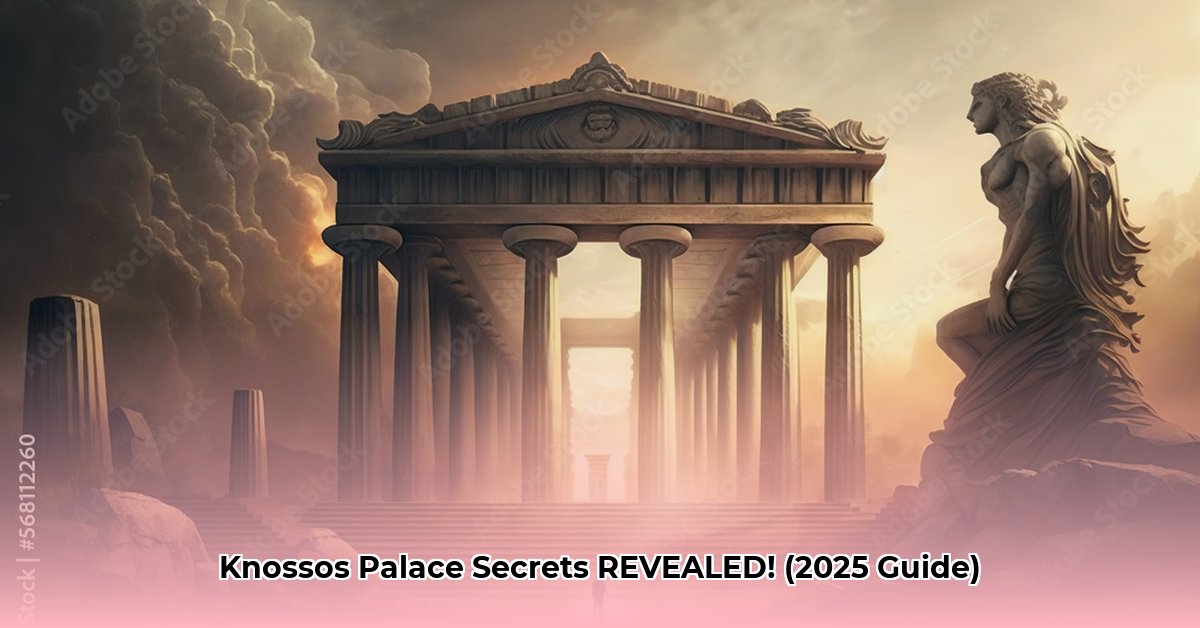
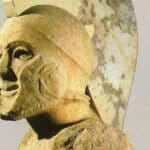
![Unlock Ancient Greece Sites: Expert Tips for Your 2025 Historical Trip [Reference] ancient_greece_sites_edited](https://www.lolaapp.com/wp-content/uploads/2025/08/ancient_greece_sites_edited-150x150.jpg)
